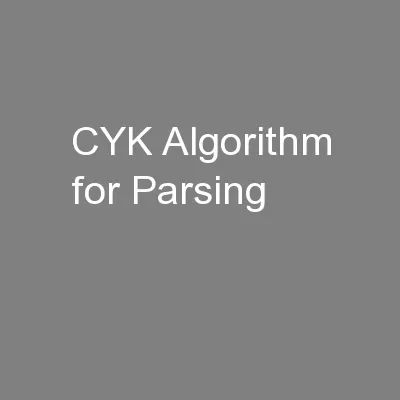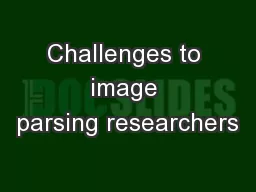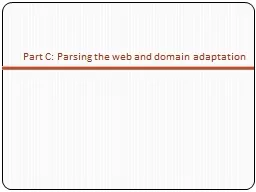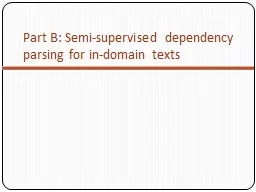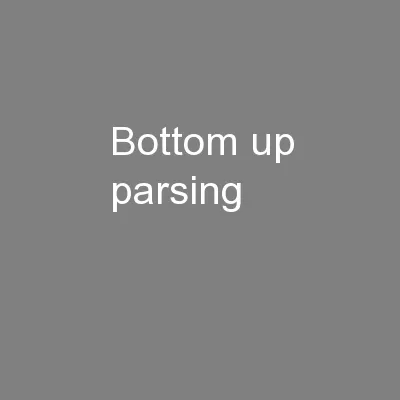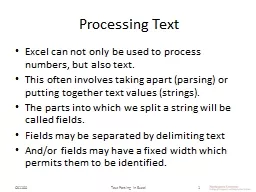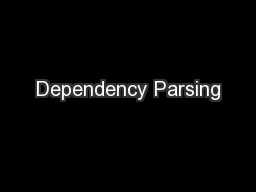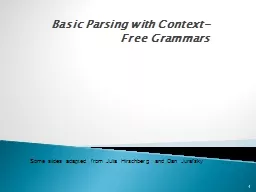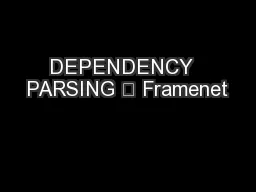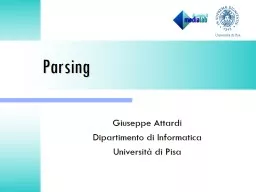PPT-CYK Algorithm for Parsing
Author : alexa-scheidler | Published Date : 2016-08-05
General ContextFree Grammars Why Parse General Grammars Can be difficult or impossible to make grammar unambiguous thus LLk and LRk methods cannot work for such
Presentation Embed Code
Download Presentation
Download Presentation The PPT/PDF document "CYK Algorithm for Parsing" is the property of its rightful owner. Permission is granted to download and print the materials on this website for personal, non-commercial use only, and to display it on your personal computer provided you do not modify the materials and that you retain all copyright notices contained in the materials. By downloading content from our website, you accept the terms of this agreement.
CYK Algorithm for Parsing: Transcript
Download Rules Of Document
"CYK Algorithm for Parsing"The content belongs to its owner. You may download and print it for personal use, without modification, and keep all copyright notices. By downloading, you agree to these terms.
Related Documents

